What year does the plum begin to bear fruit and what affects the timing of its fruiting
The plum is well adapted to the temperate continental climate, so the fruit tree can be found in almost every yard.
Agricultural technology is not whimsical, but mistakes made during planting or in care postpone the fruiting period for years.
In what year the plum begins to bear fruit, what it depends on and how to influence this period, we will tell further.
What year does the plum begin to bear fruit?
When planting a seedling, you can expect the first harvest in an average of 4 years. This is subject to the general rules of agricultural technology. Often the weather makes its own adjustments. Plum is considered a low frost resistance crop. This is especially true for young trees. Abnormal frosts, if they do not kill them, then negatively affect fruiting.
If the plum does not come into color after 4-5 years, you need to think about what could provoke the problem and how to fix it. Activities are planned taking into account how the seedling was obtained (from the seed, by layering or cuttings).
What does it depend on
The onset of fruiting depends on various factors. The first thing that affects the formation of buds is the belonging of the fruit tree to one or another group. Plum varieties are of 3 types:
- self-fertile;
- partially self-fertile;
- self-infertile.
In the first case, the tree comes into color on its own. In the other two types, the plum is surrounded by pollinating varieties. Without auxiliary pollination, fruiting will not occur.
Reference! When choosing a variety, preference is given to self-pollinated varieties. Among the popular plums: Stanley, Iskra, Pamyat Timiryazev, Monarch.
There are a number of other factors that affect fruiting:
- compliance of the variety with the climatic conditions of the region;
- correct trimming;
- waterlogged or depleted soil;
- lack of sunlight.
Is it possible to speed up the process
Knowing some of the nuances of agricultural technology, you can speed up the process of forming fruits in a young tree. The most popular solution is cropping. You can get the first fruits the next season after planting the seedling. Also, rapid fruiting is facilitated by the technique in which vertically growing branches are fixed horizontally.
This is easy to do by tying the shoots to the trellis or posts. This method allows you to change the movement of the sap, which is redirected to the lower part of the plant. This slows down the forcing of branches and foliage. In spring, buds will appear on the plum, which is a sign of the tree entering the fruiting phase.
Reference! The method of tying vertical branches horizontally is used for young seedlings, whose age does not exceed 2 years. It will not work to change the direction of a more mature plant, the shoots will break.
Another way to speed up the process of ovary formation is to tighten the branch at the base. The method is applied to a tree that is more than 3 years old. By this time, he has formed up to 6-8 skeletal shoots.
3-4 branches are selected, which are tied at the base with linen folded in several layers. A wire is tightened over the fabric using pliers. You need to do the procedure in May; in July, the fixative is removed. In the next season, the first ovaries can be observed.
The beginning of fruiting plums when grown from seeds
In nature, plums are propagated by seeds. This method is used in breeding for seedlings and new hybrid varieties. The plant obtained from the seed is characterized by high resistance to unfavorable climatic conditions, in contrast to the seedling obtained as a result of the cherry plum stock.
From the moment the seed is planted in the ground to the onset of the first fruiting, 6-7 years pass. The process of ovary formation can be accelerated after the germination of 3-4 skeletal shoots.
From layering
You can get planting material quickly and without complex manipulations from layering. This is a young growth of a plum that sprouts from the mother's roots. They do not touch him for 2 years, allowing him to grow up and get stronger. During this period, the offshoot builds up its own roots, which makes the cuttings capable of independent existence.
The main advantage of this method is the absence of the influence of external factors on the formation of the appendix. After separation from the maternal root and planting in a permanent place, it takes 4-5 years before the plum begins to bear fruit.
From cuttings
A longer process of obtaining seedlings in comparison with layering is cuttings. It takes a lot of time to root the cuttings, get the first branches, and build up foliage.
It is impossible to predict the timing of the first flowering, since it depends on the soil, compliance with planting rules and agricultural technology. Even weather conditions can affect the process. The varietal qualities of the tree from which the cutting was borrowed also play an important role.
When the purple plum begins to bear fruit
The purple plum enters the fruiting phase 3-4 years after the seedling is planted. This is an unpretentious culture, intensively growing branches and greenery. Thanks to this, it is possible to speed up the formation of ovaries by cutting. Even without special events, some varieties are presented with the first harvest after 2-3 years. These varieties include:
- Spark;
- New;
- Opata;
- Early ripening red;
- In memory of Timiryazev;
- Greengage collective farm.
Yellow
The varietal characteristics of the yellow plum are such that the tree begins to bear fruit 7-9 years after planting. And this is under favorable growing conditions. It is possible to speed up the formation of ovaries 3-4 years after disembarkation.
There are varieties of plums that begin to give fruits no earlier than 7-9 years:
- Yellow Ochakovskaya;
- Peach Michurina;
- White Yasenevskaya.
Factors determining the timing of flowering and fruiting
Novice gardeners who decide to acquire a plum should take into account the factors that determine the timing of the flowering of the culture and its fruiting.
Landing
A common reason for the lack of fruiting is the wrong choice of place for planting. Plum loves the sun. It is not worth planting it next to buildings or tall trees. You need to pay attention to the composition and environment of the soil. Acidification and scanty content of trace elements interfere with the normal vegetation of the plant.
Reference! It is possible to neutralize the acidic environment of the soil by introducing slaked lime, dolomite flour or wood ash.
The soil must be fertilized long before planting. For this purpose, both mineral compositions and organics are suitable.
When choosing a place under a tree, you should avoid wetlands. In the hole, you need to provide a drainage layer (just make it from rubble and sand). When burying a seedling, leave the root collar 3-5 cm above the soil surface.
Watering
Immediately after planting, the tree is watered. Then the procedures are repeated daily for 1 week. Further irrigation is carried out as the soil dries up. You should not be guided by the surface layer of the soil, you need to dig into the ground 10-15 cm deep. If it is dry at this level, watering is urgently organized.
For irrigation, it is recommended to use rainwater or settled tap water.
Top dressing
After the introduction of fertilizer, when planting, take a 1-2 year break. There is no special need for intensive nutrition, and overfeeding of the tree has a negative effect on the growing season. These restrictions do not apply to poor soils. With a lack of trace elements, the plant fades away.
A special need for feeding arises during the fruiting period. It is recommended to use a potassium-phosphorus mixture.
2 years after planting, the soil must be fertilized in spring and autumn. Suitable for these purposes: rotted manure, compost, combined mineral compositions.
Pruning
You can get a crop ahead of the fruiting date with proper pruning. When a two-year-old seedling is planted over the summer, an increase of 70 cm is obtained. You need to start pruning from early to mid-July. The essence of the process is to find a central conductor. This is usually the tallest shoot. The remaining branches of the upper tier are shortened. In this case, the lateral processes should be even shorter. If there are competitors on the side branches, they are cut off, leaving 3 buds each.
Shoots that grow towards the trunk are removed. Do the same with the processes growing vertically. Thanks to this procedure, the tree spends energy on planting buds, and not developing useless branches.
Growing conditions
The lack of flowering or ovary is often associated with unfavorable weather conditions. Sharp jumps in temperature provoke kidney freezing. Repeated frosts during the flowering of the tree are considered dangerous. You can help the plum survive this period by fumigating the disembarkation.
Heavy rains, which wash out pollen from the inflorescences, prevent the normal formation of ovaries. Pollination does not occur without it. Even calm weather can spoil the future harvest. With abundant flowering, pollen remains motionless. Correcting the situation is not difficult. For this, the tree is sprayed with sweet water. This attracts bees, which provide pollination.
Diseases and pests
Harmful insects quickly deal with flowers, leaves and shoots. An invasion of parasites can destroy the entire crop. The danger of plums is represented by: sawflies, aphids, a stalk. Insecticides will help eliminate the problem.
Among the common diseases that threaten the death of the fruit tree are clasterosporia, gray rot and other fungal infections. Plum can be prevented by spraying it with fungicides. It is also important to immediately remove diseased leaves, branches and fruits from the tree.
Why the plum does not bear fruit or does not bear fruit well
Blooming every spring, sometimes even high-quality hybrid rootstocks do not bear fruit. A stable yield can only be counted on by grafting a cuttings or buds of the variety that is ideally suited to the climatic characteristics of the region.
The long absence of fruit is often associated with improper pruning. Of course, it is necessary to clear the tree from dense growth, but it is important to remove branches, observing the following rules:
- cut off shoots growing down;
- remove the lower branches at the forks;
- remove top processes;
- get rid of shoots directed towards the trunk.
The following factors can interfere with the formation of ovaries:
- too dry or waterlogged soil;
- absence of trace elements important for plum in the soil;
- acidified soil;
- lack of pollinating varieties.
What mistakes need to be corrected and how to do it
To stimulate fruiting, it is recommended to adjust the irrigation and fertilization regime. According to certain signs, a deficiency of a particular microelement is recognized. For example, by the weak growth of leaves and the grayish shade of their color, it becomes clear that the plant lacks phosphorus.
Yellowing of the foliage on the upper tier indicates a lack of iron. To solve the problem, it is enough to introduce root dressing of the appropriate composition.
It is also important to control where the plum is growing.The tree should not be obscured by dense shade from buildings or tall plants. An unfavorable location of the plum is considered to be a site in a lowland or in a draft. The young tree can be transplanted into a more suitable part of the garden or yard.
Reference! Failure to comply with the rules of agricultural technology provokes shedding of inflorescences and ovaries.
The danger to the fruit tree is posed by pests. Therefore, one should not neglect preventive measures.
Fruiting is influenced by the variety of the selected plum. When buying, it is worth considering that for regions with a cool climate are suitable: Moscow Hungarian, Tula black. When grown in the middle lane, preference is given to Skoroplodnaya or Alexy. For the southern regions, any variety of culture is chosen.
Watch a video on what to do if the plum does not bear fruit:



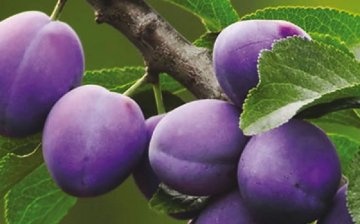
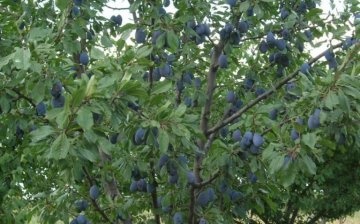
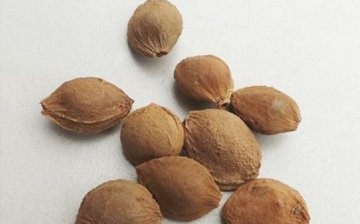
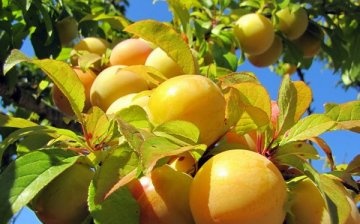




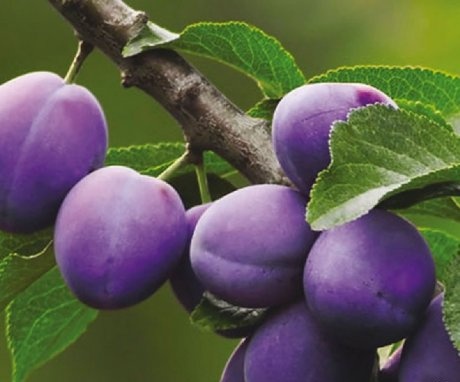
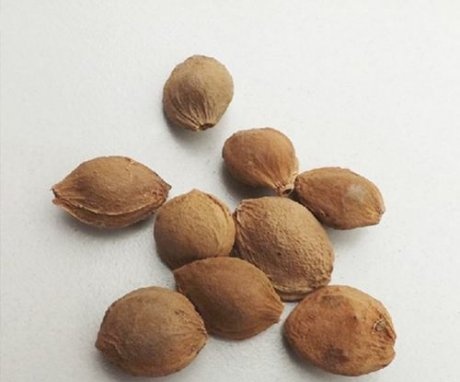
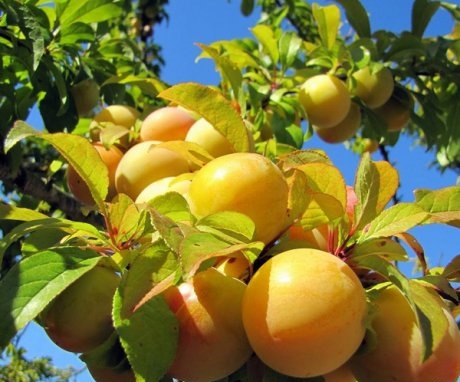
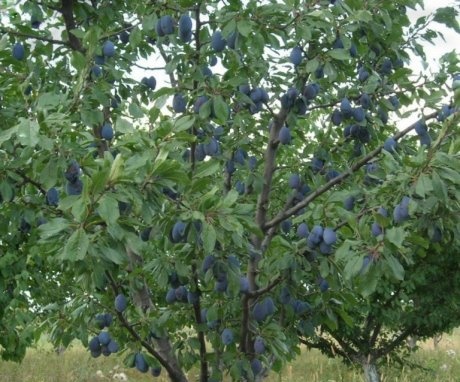
We have a Renklode Altana plum growing in our garden. We have always tried to cut the tree correctly. True, the plums were not fed and watered regularly. She began to bear fruit in the third year. True, there were few plums, and starting from the fifth year, the harvest was already large.